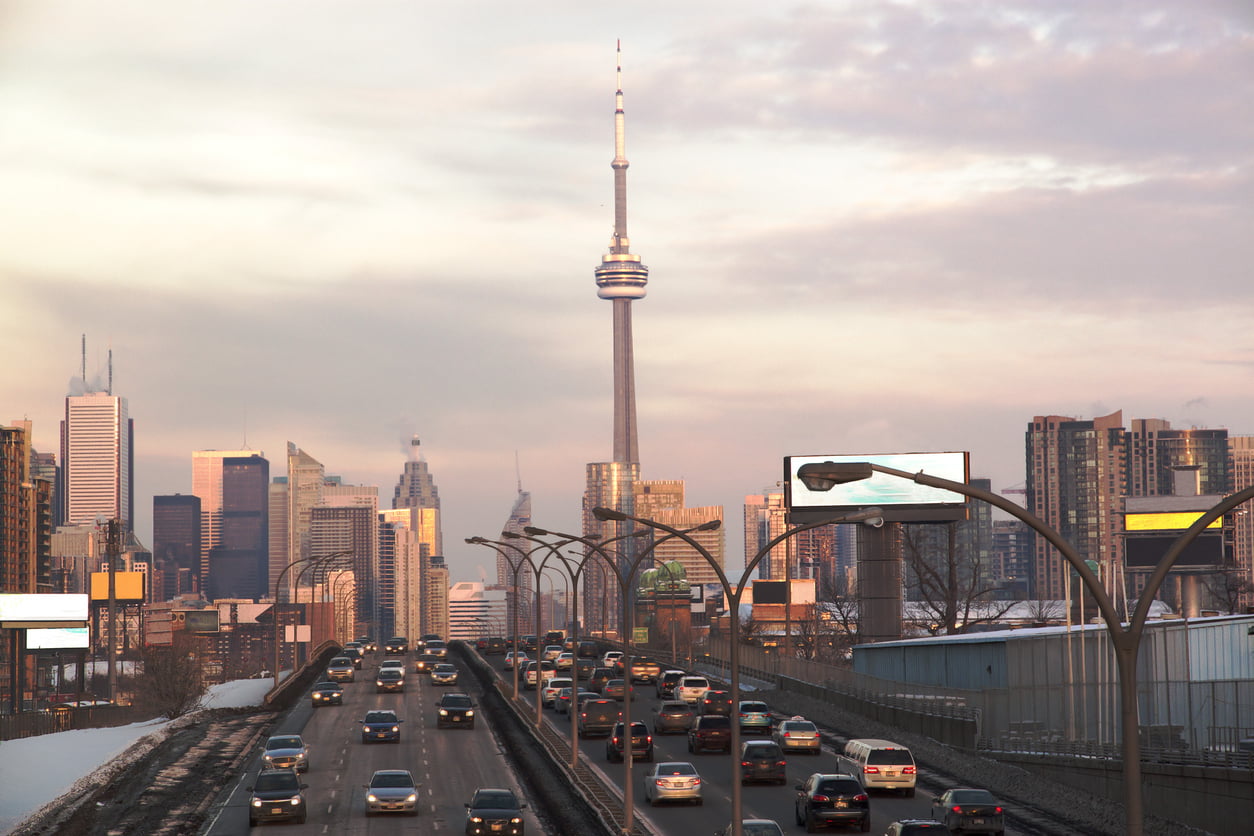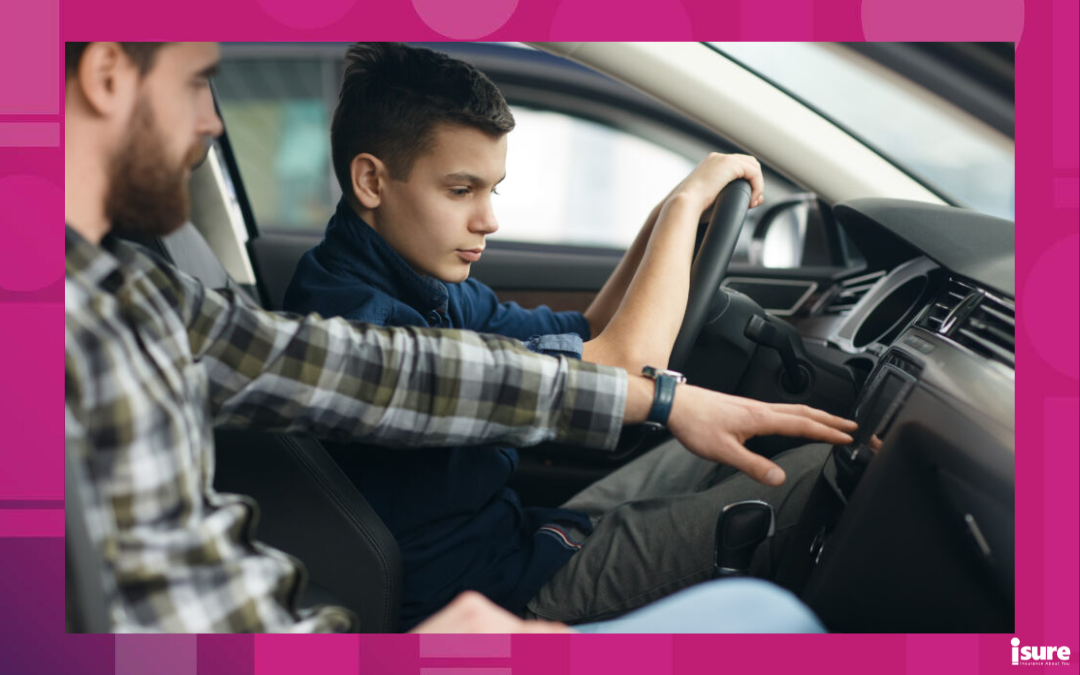Being a new driver in Ontario is an exciting and daunting time. You may have many questions about becoming newly-licensed, undergoing driver’s testing as well as the cost of insurance. In this article, we have answers to some of the common questions from new drivers to help ease some of the stress.
How do I apply for a G1 licence?
In order to apply for an Ontario licence, you must present two pieces of original identification that provide proof of your legal name, date of birth and signature. Documents must be original and valid, meaning photocopies and expired documents are not acceptable. These documents may include a passport, Canadian Citizenship Card, Ontario Photo Card or Secure Certificate of Indian Status Card.
For the full list, visit ontario.ca
What do I need to bring with me to my driving test?
You are required to bring two pieces of original identification that provide proof of your legal name, date of birth and signature. In addition, you also need to bring money for test fees and glasses/contact lenses (if you require them to drive) to your nearest DriveTest Centre. You can find the nearest centre and hours of operation at drivetest.ca.
What fees are associated with my G1 test?
When at the centre, you must pay a $159.75 fee when you apply. This includes the cost of the knowledge test, your first G2 road test and a five-year licensing fee. There are more charges for your second road test and for any retests you may need to take, which can be found at drivetest.ca/fees.
When can I start Drivers Ed or training?
As soon as you turn 16, you are eligible to write the G1 test and get your beginners driver’s licence. It is at this point that you can start driver training with an MTO-approved driving school.
What are the most common mistakes on the driving test?
Practicing and reviewing the rules of the road will help set you up for success. Some common mistakes during the road test include:
- Not correctly adjusting the driver’s seat and mirrors
- Improper lane changes
- Not maintaining the correct speed when turning a corner
- Not checking your surroundings
- Ignoring pedestrian right-of-ways
- Not respecting traffic signals and lights
- Making incomplete stops
- Distracted driving and parking
How are car insurance quotes calculated for new drivers?
There are several variables that goes into calculating car insurance quotes for new drivers. Here are a few factors taken into consideration when calculating your premium:
- Your driving record
- How frequently you use the car
- Location
- Age
- Gender
- Type of car
- Credit history
- Type of coverage you need
How much does car insurance cost for a new driver?
Ontario is the second most expensive province when it comes to car insurance. A breakdown of auto insurance in Ontario is as follows:
- The average auto insurance policy in Ontario is over $1,500 a year
- Drivers ages 16-19 years old pay the most for auto insurance, with an average yearly premium of $8,371
- Older Millennials, ages 20-34, pay between $2,200 to $2,680
- Gen X drivers (ages 34-51 years old) pay approximately $2,289
- Boomers (ages 52-70 years old), pay roughly $1,999.08
In Canada, a newly-licensed driver is known as a new driver or a first-time driver. For some car insurance companies, drivers are “new” until they have at least three years of driving experience; for others, it can take up to five or even nine years.
How long are you considered a new driver in Ontario?
This process is called “graduated licensing.” It is designed to give new drivers time to practice and gain driving experience over time. You have up to five years to finish the whole process. If you do not get your full G licence within the five-year timeframe, you will need to start over.
What happens if I cause an accident driving my parent’s car?
If you cause an accident while driving your parents’ car, it will go on your driving record, but it will also affect your parents’ policy. Since you’re listed as a driver on their policy, their premiums will increase until you leave their policy. Accident Forgiveness coverage can be added to your parents’ policy — a one-time get-out-of-jail-free card for your first at-fault accident. The incident will still go on your driving record, but it won’t affect your insurance premiums.
What happens if I get a ticket driving my parent’s car?
Should you be pulled over by the police and issued a ticket in person, you will be personally responsible for paying the fine and your licence will receive demerit points.If, however, you receive an automated ticket from a photo radar or red-light camera, a ticket will be sent to your home address. These cameras track the car’s licence plate (which is registered to your parents), and they will quickly figure out who was driving their car when it happened.
Who can drive my car under my insurance in Ontario?
If you sometimes loan your car to a child, a parent or a neighbour, you may be wondering if your automobile insurance policy will cover them. The short answer is ‘yes’. In Ontario, a friend or associate is covered under your auto insurance policy as long as they have a valid driver’s licence.
What insurance coverages must I have to drive legally in Ontario?
To drive any vehicle on a public road in Ontario, the owner of the vehicle must have the following minimum insurance coverage in place:
- Third-Party Liability: Provides compensation for drivers if they’re at-fault in an accident and the other party is hurt or killed. It also covers damages to the other person’s property and related repair costs.
- Accident Benefits: Includes coverage for injuries sustained in a collision.
- Uninsured Automobile Coverage: Offers coverage for injuries and damages sustained through the fault of a driver who is uninsured or unable to be identified (in the case of hit-and-runs).
- Direct Compensation Property Damage (DCPD): In provinces with no-fault insurance, DCPD means you will deal with your own insurer for car repairs and other damaged property.
Other optional coverage, such as collision, comprehensive, loss of use, and waiver of depreciation can be purchased to protect your vehicle and the costs associated with replacing it while it is being repaired.
Does age affect the cost of insurance for new drivers?
Premiums for new drivers who are older are generally less expensive than for those who are under the age of 25. Therefore, a new driver in their 30s or 40s may pay anywhere from $50 to $100 less per month. The reason is simply that, statistically, young drivers tend to have more accidents due to their inexperience. The good news is that as you drive and maintain an accident-free record, your insurance costs will decrease over time.
What are some of the most common driving mistakes?
According to Carfax.ca, the top 10 most common driving mistakes are:
- Driving too close to the car in front of you: Don’t tailgate!
- Not checking blind spots: Know your vehicle’s blindspots and be aware of the blindspots of other vehicles.
- Ignoring your side mirrors: Reposition your mirrors as needed to get the best view.
- Road rage: If you feel a driver is driving erratically and is a danger to others, call 911 and do not engage in a confrontation with them.
- Not using turn signals: Use your signals when you are going to make a turn, and be sure to turn them off when you are done to avoid miscommunication with other drivers.
Other common mistakes:
- Ignoring the rules of a four-way stop: First vehicle at the stop has the right of way. Those making right-hand turns and oncoming vehicles have the right of way when two cars arrive at the same time.
- Making turns into the wrong lane: Avoid making wide turns into other lanes, stay in your lane!
- Staying in the passing/overtaking lanes: The left lane is NOT the fast lane. You must move into the travel lane to the right to allow someone else to pass once you’re done.
- Not following merging etiquette: Allow others to merge onto the highway in front of you. Even when it is busy, you should always try to change lanes to allow space for merging vehicles.
- Braking too much: Don’t ride the brakes! Maintain a safe distance between you and the car in front in case of an emergency stop.
Whether you’re in your teens or an adult, becoming a new driver is a wonderful rite of passage. Remember, driving in Ontario without insurance is illegal. To make sure you have adequate coverage, speak to one of our isure representatives today. We can help explain what coverage is best for you, suggest endorsements to help cut costs, as well as other helpful tips to get you behind the wheel while paying the best rates.




